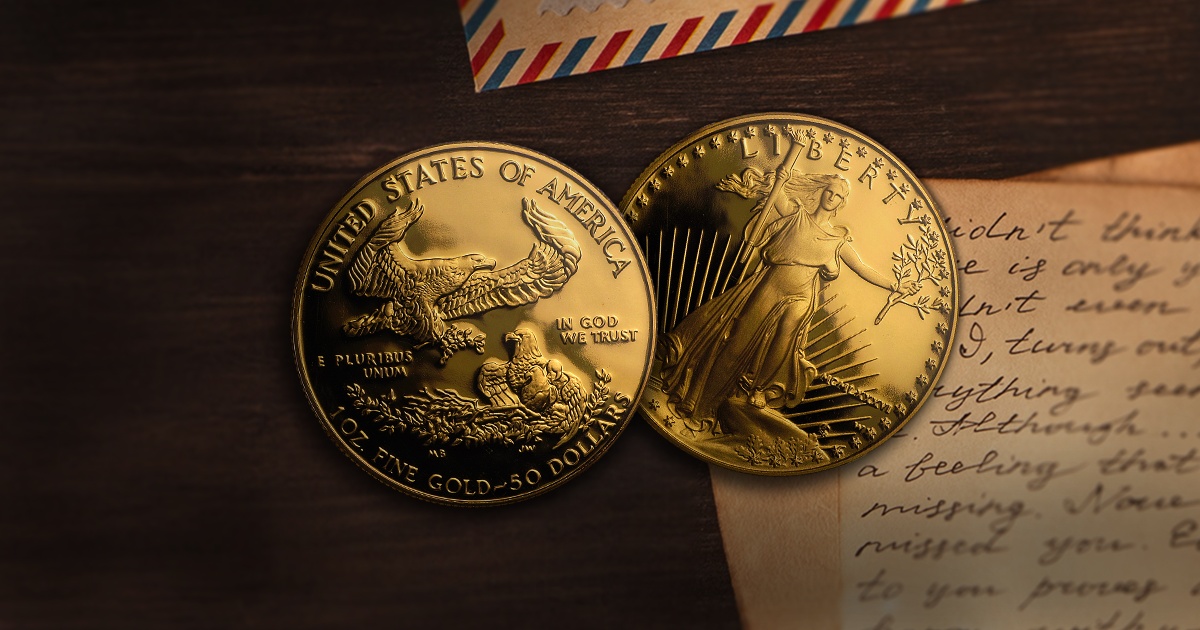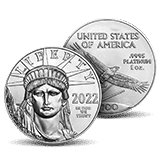
The classic Gold American Eagle, as numismatics and coin collectors know it today, would not exist without the Gold Bullion Act of 1985.
The Act requires the Secretary of the Treasury to issue minted gold coins in denominations of 50 dollars, 25 dollars, 10 dollars, and five dollars. This historically significant Act repeals a provision prohibiting the government from delivering any gold coin. It also establishes the rules on how and when gold can be mined within the United States, its territories, and its possessions.
Specific guidelines were noted regarding the gold ore’s origin, the gold’s age, when it needs to be minted after mining, and the quantity to be produced. These strict rules ensure that the gold coins are of the highest purity and fully backed by the U.S. Mint.
- The gold must be extracted from natural deposits in the U.S. or its territories within one year following the month the ore is mined.
- The Secretary is prohibited from paying more than the average world price for gold.
- In the absence of supplies for mined gold, the Act allowed gold to be used from the reserves at the average world price.
- The profit from selling the coins was required to be deposited to the Treasury to reduce the national debt.
- The U.S. Mint was required to begin producing 22-karat gold bullion coins in the following denominations: one-half, one-quarter, and one-tenth. The diameter, weight, and design of the coins were also specified.
How Did the Gold Bullion Coin Act of 1985 Happen?
President Ronald Reagan introduced the Act based on several factors, including geopolitical issues, economic decline, and an opportunity to enter the gold market.
With the rise in popularity of the South African Gold Krugerrands, the country derived half of its foreign exchange earnings from these popular coins. At the time, the U.S. was its largest source of Krugerrand sales. Reagan ended up banning imports of Krugerrands in 1985 to oppose the country’s controversial apartheid. This created a notable absence of gold coins for U.S. customers to acquire. The Canadian Maple Leaf coins attempted to fill the gap from the Krugerrand ban and took their place in popularity by 1986.
Reagan decided it was time for the U.S. to enter the precious metals industry with a gold mint to give the people what they wanted: an American-made gold investment, job opportunities, and a chance to enter the world gold market.
The 1980s in America were not ideal for economic success as unemployment rates increased, tensions with Russia were high, and Social Security was not as dependable. The people needed a fallback plan, and precious U.S. metals, especially gold bullion coins, were known to be reliable in these geopolitical climates.
The Impact on the Precious Metals Industry
With this newfound influx of support and demand for the American mines, the American Eagle Gold Bullion Program was established, and the coins began production in 1986. The success of the Gold American Eagle was unprecedented, as it quickly became the world’s most popular gold bullion coin. In fact, it was in such high demand in 2009 that the proof version was canceled. This is due to the requirement of the Act, which states that the U.S. Mint must maintain enough to keep up with the public demand.
Today, American Gold Eagles remain one of the most widely collected coins in the world. They are readily available in many different sizes, labels, packaging, and years, so you can cultivate a custom collection of Eagles if you so choose.




